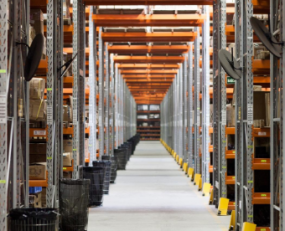
The warehouse market continues to adapt to the explosion in e-commerce. Reports from the commercial estate agent, Colliers, have underlined how warehousing is both changing but also growing.
In its latest report from the US market, Colliers commented that “despite the global pandemic slowdown, net occupancy gains for bulk industrial space totalled nearly 79.8m sq ft at mid-year, up 51% over the 52.8m sq ft transacted at mid-year 2019”; in other words, sales for big-box warehouses have increased by half over the past year.
The driver for this has overwhelmingly been e-retail activity, which Colliers says has risen as a proportion of retail sales from 11.8% in Q1 2020 to 16.1% in Q2 2020, citing US Department of Commerce figures.
Unsurprisingly Amazon is the largest purchaser, buying 26.9m sq ft in the first half of 2020, “more space than they transacted in all of 2018 or 2019”. It notes that “over the next three years, Amazon is expected to occupy an additional 161m sq ft”. And Amazon is not alone. Colliers stated that other e-commerce companies have increased the area of space they have bought in the past half-year by 50% and now account for 14.1% of space sold.
Interestingly, Colliers said that retailers generally were “shifting away from “lean” inventory strategies that proved sound in the past”. It is unclear what the basis of this statement is, but if true it would represent a significant shift. It would be all the more surprising as the rapid and high-quality data movement that enables e-retail ought to facilitate tighter inventory management.
The US is not alone in this explosion. In the UK, Colliers report that growth in e-commerce has been even more dramatic, with government statistics describing a “32.8% share of UK e-commerce sales in May 2020, this figure decreased to 28.1% in July”. Again, this led to an explosion in demand with the first half of the year seeing a 20% jump year-on-year.
Almost all of this e-retail activity has been at the expense of conventional retailing sales. Therefore, presumably, there is a large amount of empty warehouse space somewhere in their logistics provision. It is unclear what will happen to this.
Source: Transport Intelligence, October 6, 2020
Author: Thomas Cullen